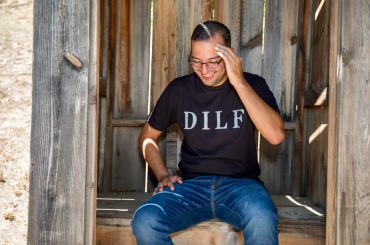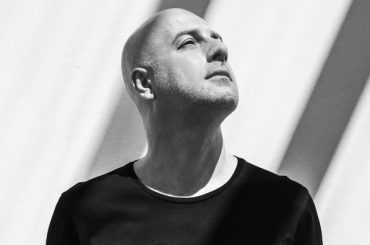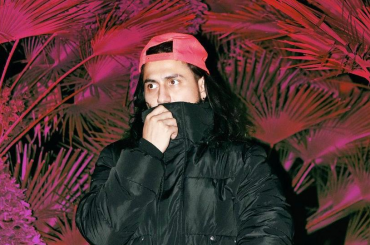San Salvador, El Salvador—Just a week after thousands of electronic dance music enthusiasts slogged through two star-studded days of Ultra Music Fest in Miami, a party with fewer pretensions and perhaps a little more passion launched a second round of fun on the Central American isthmus.
Dedicated to the spread of DJ and electronic culture in Central America, El Salvador’s Istmo Music—a music label and event company—presented Istmo Music Fest 2.0., and the reaction was more than a little heartwarming to those a little jaded by the global scene.
Held this past April 4 in a nondescript mall plaza near the capital city of San Salvador, the event showed DIY attitude from the organizers, who forged skillful alliances with sponsors Red Bull, Smirnoff Ice and Taca Airlines, among others, and a keen strategy to market its label and events. Seeing their work left no doubts about their dedication to the region’s electronic artists and their on-the-ground connection to local tastes.
Its 12-hour festival presented DJs and artists from seven countries—El Salvador, Columbia, Argentina, Honduras, Guatemala, Italy and the United States—and attracted nearly 3,000 fans. Considering the country’s general lack of nightclub support for EDM, its minimal radio exposure—reggaeton rules the clubs and airwaves—and its near-shocking dearth of internet penetration (less than 10-percent in homes), that’s no small thing. It was hard to leave El Salvador unimpressed with the surprising vitality of the audience, the passion of the performers and the vision of the organizers.
Highlights? Plenty. It went like this:
FerK (aka Istmo principal Fernando Kriete) warmed up the early-afternoon audience. Then, during an early set from Santiano Niño (Columbian via Guatamala) and Alex Hentze (Guatamala), who call their act Shit Happens, the still-arriving crowd caught a tight live set of experimental electronica—techy, with trancey moments, but no cheese. Warped filters and brain ticklers.
(OK, trainspotters, their live setup: two laptops running Ableton & Reason; a Pioneer DJM-800 mixer; Korg Nano Control; Korg Nano Pad; Edirol PCR-M1 MIDI Keyboard controller; and a Midiman Radium keyboard.)
Balto from Honduras followed. The organizer of SunJam—one of his country’s two festivals—opened with an edit of Danny Tenaglia’s “Music Is the Answer” before transitioning into a sharp set of minimal techno, but nothing too menacing. Francis Davila next hit the decks, starting tough, then getting trancey at sundown. Unsurprisingly, the party really began to cook.
American vocalist Lisa Pure then gave the show an infusion of female energy. Before she even hit the stage, she got plenty of adulation from fans in the front, taking pictures, signing autographs. But when she sang the opening lyrics to “Lost,” the 2007 global hit she fronted for Roger Sanchez, the place went batty—turns out, it was No. 1 in El Salvador. The audience was thrilled to have a star in its midst and she delivered with a sassy performance and more than a little New York swagger. Crowd singing, hands in the air, a perfect time for a PA.
Another American, this time Connecticut DJ Randy Boyer, wowed the crowd with his energetic electro-tinged set, which included his trancey mix of Oasis’ “Champagne Supernova.” Italy’s Giuseppe Ottaviani followed, carrying the trance ball and offering some breaks. Crowd still bananas, further working itself into a lather, trippy evening visuals in full effect.
Argentine trance duo HeatBeat (Agustin Servente and Matias Faint) was next and the youthful showmen quickly connected with the crowd, stepping to the lip of the stage and exhorting the audience along. Crescendos crashed, dancers hit the stage and the place went up for grabs. A real peak moment.
Not to be outdone, El Salvador’s Ofo Nuñez finished off the night with a set of plaza-wrecking techno, a more furious brand than Balto’s set—certainly more Chris Liebing than, say, Troy Pierce. Whew.
By the event’s end, I’d become further curious about the Central American scene and its DJ culture. There are few things more exciting for DJs than seeing a nascent scene emerge—more opportunities, a fresh fanbase—so I caught up with some of the festival participants upon returning to the States. It went like this:
Balto, Honduras
Your reaction to Istmo Music Fest? Very impressed with the amount of people, the very good organization, the vibe—great party. The energy of the crowd surprised me, especially the reaction to specific tracks. This showed that the audience knows the material.
Your highlight? For me, just getting a very positive reaction of the crowd. Even having an early time slot, I really enjoyed it. It gave me a chance to try a different kind of set, a lighter one. Very pleased!
Describe your festivals in Honduras. We have two types of festivals. At Modular, which is in Tegucigalpa the capital, we get around 1,000 people. We have an international DJ joining the local DJs. It’s mostly tech-house, techno and minimal. This is the third year of Modular—excellent response. The SunJam festival is held in Utila, one of The Bay Islands in the Honduran Caribbean. It’s once a year with DJs from all over Central America join an international guest DJ. The location is magical. We get about 1,500 and you can find people from all over the world.
Tell me about EDM’s growth in your part of the world. Each year more people go to the events. People are hungry for fresh entertainment and they are happy to have an alternative—not just the typical commercial and tropical styles of music. Here in Honduras, most people who listen to electronic music prefer techno, house and their sub-genres.
Which DJ or producer are you most impressed with now? I am influenced by artists like Xpansul, Massi DL, Tim Xavier, Samuel L. Sessions, Mark Broom and Paco Osuna. I enjoy their production style—solid and groovy techno—and also by their constant pushing forward in the genre.
In your country, what gets young people interested in DJing? I think it comes from the new options that electronic music gives us, always evolving and renewing itself—seeing the personal styles of each DJ who visits our country helps. It keeps people interested.
Ofo Nuñez, El Salvador
How was the festival for you? Incredible. I had a really great time watching all the DJs rock it out for two hours each, listening to all the high-quality music that was being played. Also, watching the crowd have a hell of a time dancing and screaming to their favorite DJs was surreal. It was intense.
Anything surprise you? It’s uncommon to see big festivals of electronic music in El Salvador, as it’s in its early stages of development and on a road of progressive growth. But watching how the venue started to get packed during the sunset hours until the venue was completely full was really comforting.
Your highlight? When I took the turntables after HeatBeat, an amazing high-energy packed trance act. I was about to close the festival with some techno music that obviously would be going at a much slower BPM. At first I thought that probably the crowd wouldn’t react that well to it, as they would feel the BPM difference, so I tried to get the most high-energy techno I could find. To my surprise, the crowd reacted amazingly well—they kept dancing until the last track was played at almost 4 a.m., and they wouldn’t leave after it was over. They still wanted more!
In Central America specifically, explain the popularity of electronic dance music? The popularity of EDM has been evolving through all Central America. Each country has developed its own scene and its own perspective on dance music. You can see a great deal of electro and minimal on Guatemala, a high dose of trance and techno here in El Salvador, a much larger fanbase of techno in Honduras and each country is getting its electronic music dosage and experimenting with different genres.
Which DJ or producer impresses you? Chris Liebing. His productions have managed to keep the high energy techno feeling going, while keeping his sound very fresh and up to date. This balance is hard to come by. Some producers have decided to follow a slower, more minimal path. But his productions have tremendous impact on the dancefloor.
Where do DJs shop? We have one or two stores, with very limited gear for sale. Also, due to the shipping taxes to get the gear to El Salvador, prices at these stores are ridiculously high. For example, a $300 CDJ unit, something that probably already has a newer more equipped model on the world market, would be around $700 dollars or more in our local stores. These high prices force DJ/producers to order all their gear from the USA where you can save yourself those few hundred dollars and get the newer models.
How do DJs get started in El Salvador? By doing these events, like the festival, young people start to interact more with the music and become motivated. They start organizing their own small parties at small venues and now we’re beginning to see more young DJs here with a fresh take on music.
Santiago Niño, Guatemala
How was Istmo Fest for you? Awesome crowd, awesome music, awesome organization.
Your highlight? I really enjoyed Ofo Nuñez and Giuseppe Ottaviani.
In Central America specifically, is electronic dance music gaining popularity over other genres like hip-hop or reggaeton? You can’t compare hip hop or reggaeton with electronic music—two different types of music and cultures. EDM comes from the underground and it should stay that way. It shouldn’t compete with mainstream music in any level, so we don’t need to be worried about that.
In your estimation, which electronic genres are most accepted in Guatemala? Genres come and go. Before, it was house, then electro. Now I think techno is taking over. I guess trance will have its time, so it’s really a question of trends.
In Guatemala, were do young people get the DJing spark? Here, people start DJing because of the influence of the events. They begin as part of the audience and then get more into the music. Some feel the need to become DJs.
Which DJs or producers are you most impressed with now? I’m really into what John Digweed is playing on his radio shows. It’s really interesting. You can appreciate the musical side and dance to it at the same time—very deep stuff.
Randy Boyer, USA
Your general reaction to Istmo Music Fest? One of the most amazing experiences I have ever had. There’s nothing better in the world than having thousands of people vibing to your music—electronic dance music is by far the universal language. I don’t know any Spanish, but I still connected with everyone at that festival through my music.
The crowd was really going off, especially during your Oasis remix. That’s what it’s all about. This type of music is so special because it really brings everyone together no matter where you are or what language you speak. I feel blessed to witness this. My gigs at both Istmo Fests have definitely been high points in my career.
Your gig highlight? Playing the new track [“Happy Ending” by HeatBoyer] I produced with HeatBeat that week, and having Agustin and Matias come on stage and rock out next to me with thousands of people smiling, dancing their asses off.
Which DJ/producers impress you now? HeatBeat, Super8 & DJ Tab, Kyau & Albert. HeatBeat just has this unique style. It reminds me of my own style, which is a really hard-hitting, electro bass-heavy sound—real serious trance!
Your view of the Central American electronic dance scene? I’ve only been to El Salvador twice, but it’s definitely more in the mainstream in Central America than the U.S. I have to say that I have noticed on my own Facebook account that I have so much support from everyone in Central America. I think it’s going to keep growing, especially for the Istmo artists. By the way, the label is amazing, always proper releases, and marketed is top notch. Istmo is definitely a huge player in Central America and I hope they continue to do what they are doing and influence their region locally and throughout the world.
HeatBeat, Argentina
Your reaction to Istmo Music Festival? An amazing night, one of our best gigs in 2009 so far. The crowd is really euphoric in El Salvador, and the vibe that you feel over there is amazing—pure Latino style!
Anything surprise you? Fernando Kriete (FerK) did a great job on the decks. Also, Ofo Nuñez from El Salvador did the closing set, and he spins some amazing techno.
A highlight? With Randy Boyer, we played our collaboration that we produced together in those days before the festival in El Salvador. It was a blast! All the people were jumping, screaming and dancing.
Which DJ or producer are you most impressed with now? John O’Callaghan—he’s top notch, one of the few producers that always tries to innovate, tries to do something different. This is what the trance scene needs, people unafraid of changes.
How is Central America progressing with EDM? Especially in El Salvador and Guatemala, the scene is getting stronger day by day. Good promoters are turning this part of the world into a “must-go” point for all the global DJs’ schedules.
Lisa Pure, USA
Your reaction to the festival? I had an amazing time. The vibe was incredible. The fans were so enthusiastic and really got into everyone’s set. They stood out in my mind as one of the best crowds I’ve ever sung to across the globe.
Which DJs most impressed you? I have to give props to Randy Boyer. He truly worked the crowd and they loved him.
The highlight for you? When I arrived at the festival there was a crowd of people that were screaming out to me. I went over to say hello and take pictures with them and to thank them for supporting me. One girl said to me, “Lisa, you have no idea how important you are to us here.” That will forever be in my memory. I’m truly thankful for all the success I have received worldwide, but when fans reach out to you and say things like that, well, that makes me keep pushing forward and never give up.
Giuseppe Ottaviani, Italy
How was Istmo Fest for you? I was really excited to play there—it was my first time in San Salvador. Amazing crowd and very good reaction. I had so much fun playing and I can’t wait to come back.
Anything about the event surprise you? In the middle of my set, some people in front of the stage started to make a kind of “dance competition.” They were dancing one against the other in the center of a circle made from the rest of the people. Crazy. I’ve never seen anything similar on an electronic dance festival.
Which DJ or producer are you most impressed with now? I like Santiago Niño a lot. Also, John O’Callaghan. He just released his new album, Never Fade Away, which includes a track called “Liquid Fire,” a collaboration between him and myself. We also made a second collaboration track called “Our Dimension,” which will be released on my album coming up on VANDIT Records around end of August.
Francis Davila, Guatemala
How was Istmo Music Fest for you? A really good event at a good venue, with an excellent sound, setting and organization.
What impressed you? I was really impressed about crowd in general, because everyone is so young and they are really open to different genres. They always have good support for artists in the region, which is great.
How does EDM rate in Central America, relative to other genres? It is very likely that reggaeton is listened to by a bigger percentage of the population, but it is not a solid scene or a movement. Electronic music has been built through the years, and people recognize and support local DJs and producers.
Which producer are you feeling now? I love Gui Boratto. He has a special sensibility for the music he makes.
How’s the DJ culture in your country? We have two or three international DJs every month and lots of parties with local DJs in small bars. Sometimes even three international DJs might even be on the same week. There aren`t any specific electronic music clubs, but there are different types of venues where you can make events.
What sounds do Guatamalans like? Trance is heard a lot, especially because people in general tend to hear artists that are played in the radio and they lean towards pop. But I can say techno has had a good moment in Guatemala. We`ve been visited by artists like Richie Hawtin, Paco Osuna, Marco Carola, Adam Beyer and more. This says a lot about the people`s preferences.
Fernando Kriete (aka FerK), El Salvador
What are the goals for Istmo Music, the festival and label? To unite our region through music; to provide a successful platform for the finest Central and Latin American talent to be able to develop sustainable careers; and to provide the ultimate musical entertainment experience for our followers.
What’s the strategy for the festival? To make it the finest festival for EDM in all of Central/Latin America, without having to “import” a concept. It’s a festival with internal growth—regional and local talent—drawn from the love and passion for music. It’s a vibrant, organically growing culture. The success, so far, of our festival shows some promising beginnings.






